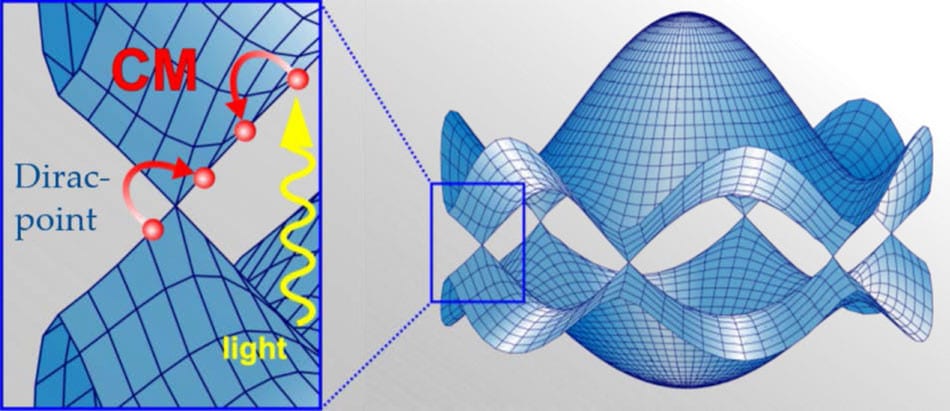Carrier multiplication is an ultrafast many-particle phenomenon that is of great interest both for fundamental many-particle physics as well as technological applications. The theoretical prediction and its experimental verification for semiconductor quantum dots has attracted much attention, and can now be extended to other nanomaterials including carbon nanotubes and graphene. The remarkable gapless and linear band structure of graphene opens up new carrier relaxation channels bridging the valence and the conduction band. The appearance of carrier multiplication, i. e. the generation of multiple electron–hole pairs through internal scattering, may be the most fascinating ultrafast phenomenon characterizing the carrier dynamics in graphene. The underlying physical mechanism of this phenomenon are Auger processes, which are specific Coulomb interband scattering events, where one carrier (electron or hole) bridges the valence and the conduction band, while the other involved carrier remains in the same band. As a result, Auger scattering changes the overall charge carrier density consisting of electrons in the conduction and holes in the valence band.
In their Feature Article “Review on carrier multiplication in graphene” in physica status solid (b), researchers from Chalmers University of Technology Gothenburg and Technical University Berlin review the research on carrier multiplication in graphene including theoretical modeling and experimental demonstration. They point out that carrier multiplication enables a fast detection of photons with a high responsivity, and that this ultrafast phenomenon has the potential to increase the power conversion efficiency of single-junction solar cells above the Shockley–Queisser limit. The first author, Prof. Dr. Ermin Malic, was awarded the prestigious Walter-Schottky-Prize by the German Physical Society in 2016 for his outstanding theoretical work on carrier dynamics in graphene in a magnetic field.

















